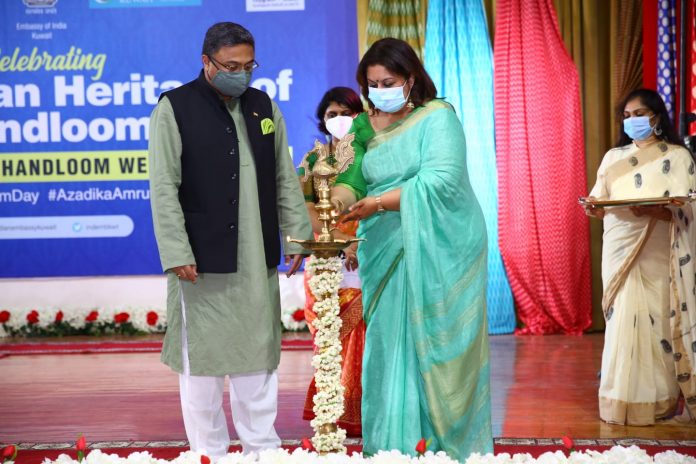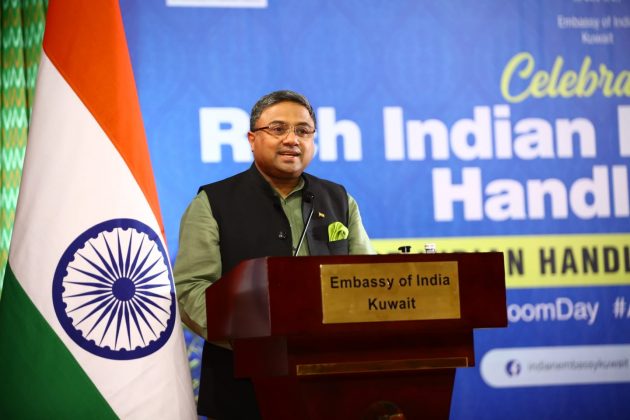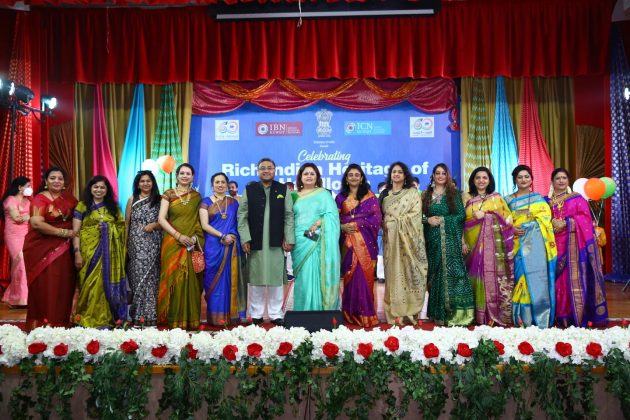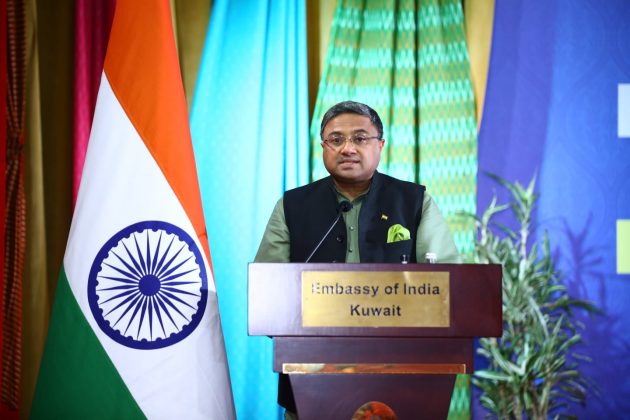Indian Ambassador H E Sibi George inaugurated Indian Handloom Week in Kuwait. Indian handloom week is part of the efforts to enhance the economic engagement of India with Kuwait, at the same time celebrating the handloom industry which demonstrates the richness and diversity of Indian culture.
Indian hand-woven fabrics have been known since time immemorial. Of all the arts and crafts of India, traditional handloom textiles are probably among the oldest. Handloom in India is not just a piece of cloth. It actually enshrines a piece of our civilization.
The handloom industry in India has a long tradition of excellent craftsmanship, representing and preserving the vibrant Indian culture. Each region of India has its own textile tradition. From the Indian state Jammu and Kashmir to Kerala and Tamil Nadu, from North East to Rajasthan and Gujarat, handloom in diverse variety and style is spread across thousands of towns and villages in all the States of India.
In popular culture, Handloom is mostly associated with sarees. But not just sarees, but in fact, anything and everything from the humble handkerchief to stole, shawl, hat, towel, bed cover, cushion covers, jackets, even socks, and shawls all can be found hand-woven in different parts of India. The fabrics used are cotton, silk, wool and linen, and many other such yarns.
Indian artists are now distinguished worldwide for their hand spinning, weaving, and printing elegance, and our handloom products are known all over the world.
The Indian Ambassador, having traveled all over the world as a diplomat said that. “I can say for sure from experience that India’s handloom products are among the most sought after Indian products anywhere in the world today including in the Gulf and Kuwait. A Pashmina Shawl of Jammu & Kashmir or a Kanchipuram Saree of Tamil Nadu or a Kasavu Mundu of Kerala or a Stole of Mizoram is sought after products of India.”
The Indian Ambassador visited the Al Sadu House museum in Kuwait where he was delighted to see the strong connection between India and Kuwait in the textiles industry, particularly in the handloom sector. For many generations, Kuwaiti weavers were importing dyes from India.
Indian handloom industry products are known for their unique designs and finesse. The industry has a strong infrastructure with about 2.4 million looms of varied designs and construction, indicating significant production capacity. The export of handloom products from India is valued at around US$ 350 million annually. Nearly 15% of cloth production in India is from the handloom sector.
On August 7, India observed national handloom day. On this day, India honors the handloom weaving community for their immense contribution to the socio-economic development of the country.
Indian Ambassador expressed his happiness on celebrating this week as Handloom Week in Kuwait. He invited Kuwaiti friends to be partners in India’s economic progress and try out more Indian products.
At the end of the event, the Ambassador thanked all the importers of handloom products and textiles from India. The Embassy looks forward to working with them and all stakeholders to expand India’s trade with Kuwait.




















